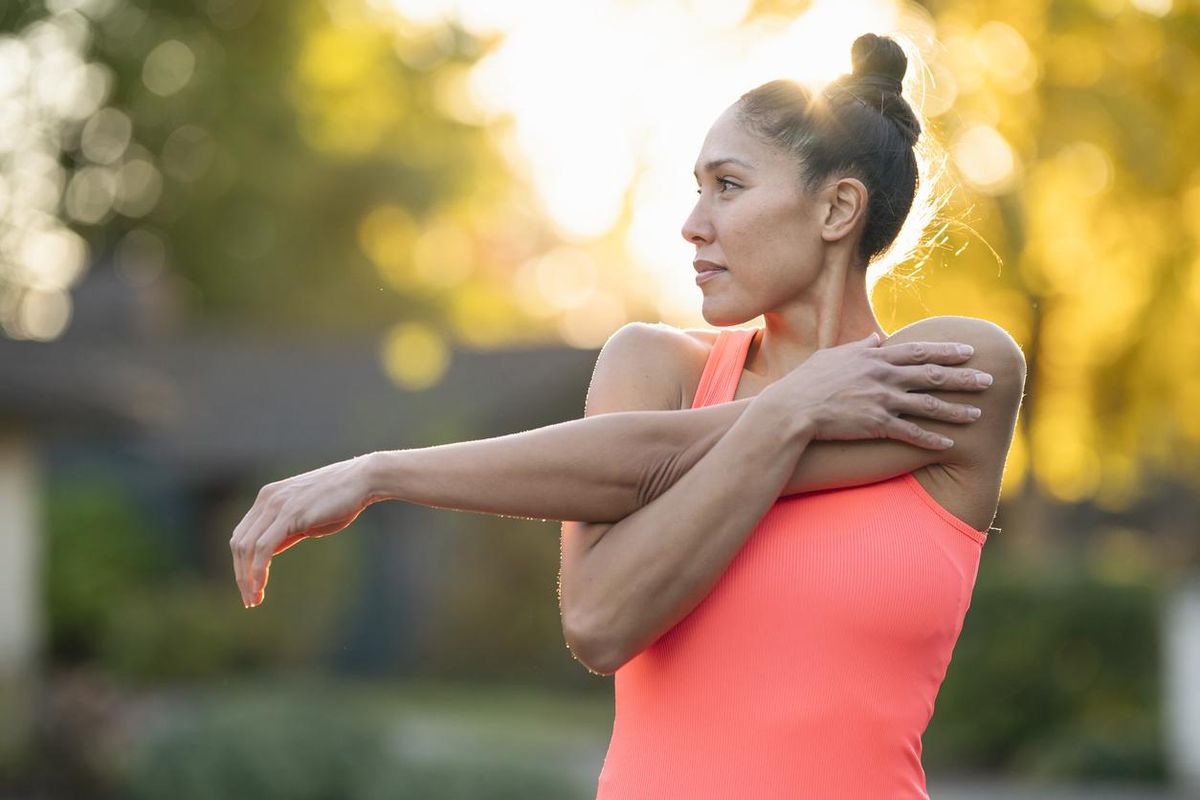#1: Your best friend announces that she can't come to your big holiday dinner. Instead of bringing salad and dessert for 10 people, as planned, she's headed to a ski resort 200 miles away. "Why do these things always happen to me?" you think. "There's no one else who can help. The dinner will be a disaster."
#2: After walking around the neighborhood for exercise a few times, you decide to increase your activity by brisk-walking a mile on a track five times a week. You feel great about your new fitness plan, but it isn't long before your lower back starts to hurt. You buy new athletic shoes, but they don't help. Soon, the back pain becomes so bad that even short walks are uncomfortable, and you stop exercising entirely.
What's going on?
At first glance, these two stories appear to have little in common. Look again, though, and you'll see that they both demonstrate how a lack of flexibility, either emotional or physical, affects your wellbeing.
Flexibility is a key component of good health, yet it is often overlooked or thought simply to be something you are born with (or without). Having greater flexibility results in real benefits. It lets you deal with stress more effectively; keeps negative emotions at bay; helps your cardiac health; reduces changes that contribute to diabetes, high blood pressure and obesity; improves your range of motion; reduces pain; and lowers injury risk.
Those are just some of the reasons why both emotional and physical flexibility should be developed, strengthened and sustained.
"Many systems do well with more variability," says Laura D. Kubzansky, PhD, an associate professor in the Department of Society, Human Development and Health at the Harvard School of Public Health in Boston. "Emotional flexibility is what allows people to cope with myriad challenges that come their way."
Similarly, having better physical flexibility helps your body cope with the challenges it encounters—from housework to a walk in the park to playing a demanding game of tennis. "It's important at every level of activity, whether you're sedentary or very active," says Cheryl L. Appleberry, MS, ATC, program coordinator of graduate sports medicine at Georgia State University, Atlanta.
Loosening up
No matter which type of flexibility you want to develop (and maybe it's both), your core task is to replace rigidity with a healthier system that's better suited to a living, changing being.
For your emotional life, it's important to recognize the toll taken by having high levels of negative feelings, such as anger, anxiety and depression. Worrying can keep you "in an endless loop," Dr. Kubzansky says, making your unhappiness or distress chronic. "If depression, anxiety or anger occur a lot, that should be a signal, just as pain is a signal. It tells you something is not quite right."
Chronically distressed people may not have good insight into their condition, she adds.
"It takes some insight to know if you're emotionally flexible," says Dr. Kubzansky. When you're able to use multiple coping strategies to regulate negative emotions, you break the closed circle of rigid beliefs. You may find that you can solve the problem you've encountered or you recognize that it can't be solved, so you change your focus.
What helps you get to that place? According to Dr. Kubzansky, many people use yoga or meditation to help shut down their thoughts for a bit. Physical activity, talking with friends, increasing leisure time, even writing down worries and putting them in a box to forget about them can help. For those who are chronically distressed, she adds, professional help can provide closer guidance in developing emotional flexibility.
Building physical flexibility
Remember when gym class started with a series of quick, bouncy stretches ("touch your toes, ladies!") that were supposed to get your body ready for exercise? Called ballistic stretches, all you need to know about them these days is that they're a bad idea. Doing bouncing stretches can tear your muscles, causing scars that tighten the tissue as it heals and result in less flexibility, even pain.
The goal your gym teacher had in mind—developing muscle flexibility—was correct, even if the technique was wrong. You need to help your muscles become more elastic so they can move better, with less injury risk.
Yet, like spot reducing for weight loss, spot flexibility is a myth. "The body is a kinetic link. Regardless of where your tightness is, it will affect you elsewhere," Appleberry says. If your hamstring muscles are tight, she explains, it pulls your pelvis back, out of alignment, and moves your shoulders forward. That creates a distorted body position and may lead to low back pain.
Instead of stretching to warm up, you should warm up in order to stretch, Appleberry points out. Five minutes of walking on a treadmill or bike riding will prepare you for stretching before activity. This is when she advises doing dynamic stretches, such as walking across the room and bringing your knees up to your chest as you walk. On the walk back, try to touch your heels to your rear end. "If it hurts, you're doing it too high or too hard," she adds.
Your main flexibility work should come after your physical activity, whether aerobic (walking, running), resistance (using weights or elastic bands) or non-impact (biking, swimming). These static stretches allow muscles to become more flexible, increase range of motion and decrease joint pressure. If you do such stretches three times a week after other exercise, you'll begin to see your flexibility improve in four to six weeks, Appleberry says.
She recommends these two flexibility boosters. Both are static stretches:
Hamstring stretch
- Lie on the floor, on your back.
- Loop a towel or jump rope around the arch of one foot.
- Lift leg and straighten.
- Slowly pull towel or rope toward chest.
- Hold stretch for 1 minute. (Do not bounce leg.)
- Repeat 2 to 3 times.
Corner stretch (for pectoral muscles)
- Stand straight, facing corner.
- Place one elbow on each wall, palms facing walls.
- Take 1 step back, keeping elbow and palm positions.
- Bring chest and nose into corner.
- Hold stretch for 1 minute.
- Repeat 2 to 3 times.






